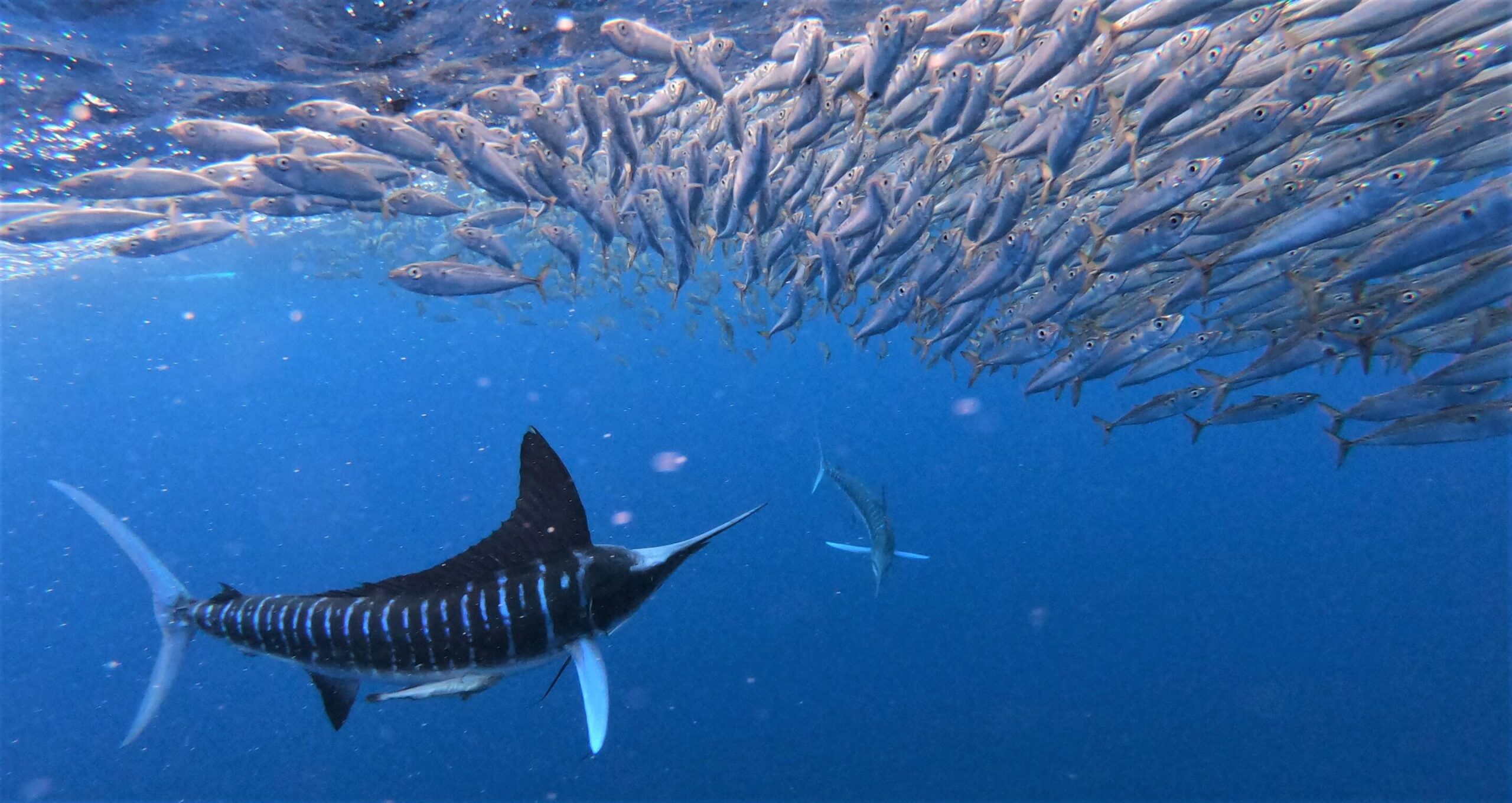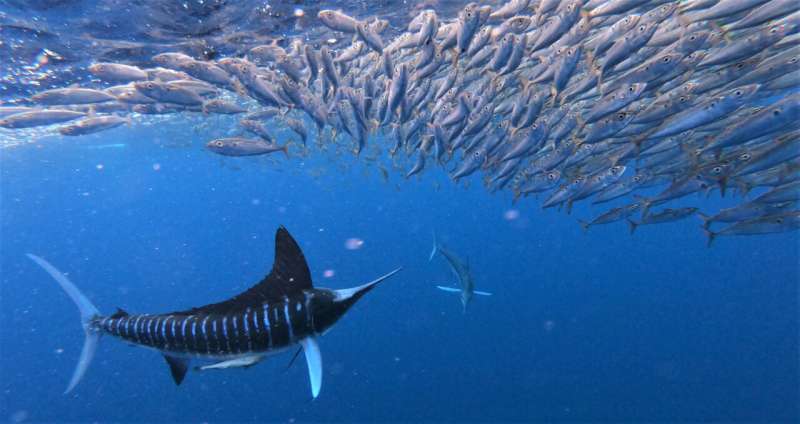
by Angelina Tittmann, Leibniz-Institut für Gewässerökologie und Binnenfischerei (IGB)

Why do animals actually hunt in groups when they have to share the prey afterwards? Researchers from the Cluster of Excellence Science of Intelligence (SCIoI), in which Humboldt-Universität zu Berlin (HU Berlin) and the Leibniz Institute of Freshwater Ecology and Inland Fisheries (IGB) are involved, have shown in a field study in the ocean off Mexico that the faster the prey school moves, the higher the capture rate of the striped marlin.
This is because if the prey school is moving fast, individual prey fish are more likely to become isolated from the swarm. These isolated fish are then easily caught by the non-attacking marlins. This shows an advantage of group hunting for the predatory fish. The study is published in the journal Functional Ecology.
Group-hunting animals have been shown to engage their prey in long pursuits, whereby there are always phases in which the prey either stops or flees. In terrestrial predators, there is evidence that capture success increases when groups of prey flee, because weaker group members may become isolated and defenseless.
“Little is known on this topic for predators that hunt in groups in the open sea, as it is difficult to record the attack and capture rates of several predators together with the positions of predators and prey,” explained behavioral ecologist Professor Jens Krause, one of the study’s first authors.
Fast prey is easy prey
The striped marlin (Kajikia audax) is one of the largest and fastest predatory fish in the world’s oceans. They group-hunt schools of small fish, helped by their long, spear-like mouth appendage.
Using a combination of underwater and aerial photography, the research team tracked the movements of schools of fish being hunted by groups of striped marlin in the eastern Pacific, about 30 kilometers off the coast of northern Mexico. They analyzed the attack and capture rates of the predatory fish during mobile and stationary movement states of the prey schools.
Chasing schools of prey at high speed led to marlin attacks producing a higher proportion of isolated prey. The likelihood of a prey being isolated from a mobile school was predicted by the speed of the school, with an increase of 0.1 meters per second leading to an 18% increase in the likelihood of isolation.
Even uninvolved marlins get some of the prey
The isolated prey fish were quickly and easily captured by conspecifics swimming nearby. “This study clearly shows the advantage of rapid group hunting for predatory fish. The rapid movement of the swarm of prey makes it easier to isolate and catch individual fish. This significantly increases the hunting success of the group of marlins,” concluded Korbinian Pacher, also first author of the study.
“Another interesting aspect of group hunting at high speed is that in this form of hunting, prey also falls to the animals that are not actively attacking the prey school. This effect probably favors group hunting in striped marlins and may be a principle that applies to many large predatory fish in the open sea that join together to hunt schooling fish,” added Dr. Matthew J. Hansen, who led the study.
More information:
K. Pacher et al, Evidence for a by‐product mutualism in a group hunter depends on prey movement state, Functional Ecology (2024). DOI: 10.1111/1365-2435.14638
Provided by
Leibniz-Institut für Gewässerökologie und Binnenfischerei (IGB)
Citation:
Fast prey: Even non-attacking predatory fish benefit from group hunting at high speed (2024, October 24)
retrieved 25 October 2024
from https://phys.org/news/2024-10-fast-prey-predatory-fish-benefit.html
This document is subject to copyright. Apart from any fair dealing for the purpose of private study or research, no
part may be reproduced without the written permission. The content is provided for information purposes only.